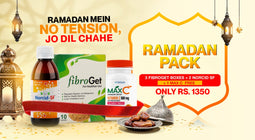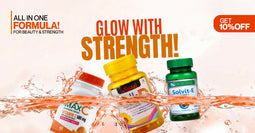
Introduction: Tired of Acne That Won’t Go Away?
You're eating healthy, using top skincare, and still breaking out—especially around the jawline, chin, or cheeks. Sound familiar? You may be dealing with hormonal acne, often triggered by conditions like PCOS, irregular periods, or stress-related hormonal imbalance. The good news? Once you identify the real cause behind these breakouts, you can take control with targeted natural treatments and simple lifestyle changes.
In this blog, we'll explore what causes hormonal acne, how it’s connected to PCOS symptoms, and effective ways to treat it—inside and out.
What Is Hormonal Acne? Why Regular Skincare Isn’t Enough
How Hormones Trigger Breakouts in Women
Hormonal acne develops when hormonal fluctuations cause excess oil production, inflammation, and clogged pores. It’s most common among women in their 20s to 40s and tends to worsen:
-
Before or during your period
-
During pregnancy
-
When going off birth control
-
With untreated PCOS or stress
Signs of hormonal acne include:
-
Deep, cystic pimples around the chin and jawline
-
Recurring breakouts that don’t respond to regular creams
-
Flare-ups tied to your menstrual cycle
-
Oily skin and visible large pores
🔗 Related blog: Sestol by SOIS Life Sciences – PCOS & Hormonal Support
The PCOS Connection: Why Acne Isn’t Just a Skin Problem
PCOS Symptoms That Show Up On Your Face
Polycystic Ovary Syndrome (PCOS) is one of the most common causes of hormonal imbalance and persistent acne in women. It affects 1 in 5 women in Pakistan and often goes undiagnosed.
Here’s how PCOS leads to acne:
-
Excess androgens (male hormones) trigger oil glands
-
Irregular periods affect estrogen and progesterone levels
-
Insulin resistance leads to inflammation and breakouts
If you have acne, plus symptoms like facial hair, irregular cycles, or weight gain, you may be dealing with PCOS.
🌿 Recommended Solution: Sestol PCOS Supplement – Formulated with myo-inositol and folic acid to naturally balance hormones and reduce acne from within.
🔗 Also read: Importance of Folic Acid in Hormonal Health
🔗 Myo-Inositol for PCOS & Fertility
Emotional Impact: Acne, Depression, and Anxiety
More Than Skin Deep – The Psychological Side of Hormonal Acne
For many women, acne isn’t just physical. It deeply affects self-esteem, confidence, and emotional well-being. Studies show that women with acne linked to PCOS are more likely to experience:
-
Social withdrawal and self-consciousness
-
Depression and anxiety
-
Body image issues and emotional eating
That’s why addressing the root hormonal cause can improve both skin and mood.
💆♀️ Try the Hormonal Harmony Bundle – Sestol + Refresh Softgels for mood balance, skin glow, and hormonal peace.
Diet and Acne: What You Eat Shows Up On Your Face
The Best PCOS Diet for Clearer Skin
Changing your diet is one of the fastest ways to see improvements in hormonal acne. A balanced PCOS diet helps regulate insulin and androgen levels, which reduces oil production and breakouts.
Eat More Of:
-
Leafy greens (spinach, kale)
-
Whole grains (quinoa, oats)
-
Anti-inflammatory foods (berries, turmeric)
-
Omega-3s (flaxseed, walnuts)
Avoid:
-
Sugar, dairy, and white carbs
-
Caffeinated beverages
-
Processed foods and seed oils
🛍️ Shop the Sestol Ultimate Wellness Bundle – Comes with Refresh Detox for internal cleansing and radiant skin.
Acne Treatment Options: What Really Works for Hormonal Breakouts?
From Prescription to Natural Solutions
If you're tired of trying every face wash and still breaking out, it’s time to go deeper.
Medical Options:
-
Birth control pills: Regulate hormones but come with side effects
-
Anti-androgens (e.g., spironolactone): Effective but not ideal for long-term use
-
Topical treatments: Help manage surface acne but don’t fix the root cause
Natural Approach (Long-Term Relief):
-
Myo-Inositol + Folic Acid: Proven to reduce testosterone levels and regulate cycles
-
Adaptogenic herbs (ashwagandha, spearmint): Help reduce stress hormones
-
Gut health support: Improves inflammation and hormone metabolism
🌱 Sestol Wellness TRO Pack – Includes gut and vitamin support for full-spectrum PCOS care.
Daily Habits That Help Balance Hormones Naturally
Small Changes = Big Skin Wins
-
🌞 Sleep 7–8 hours: Hormone regulation happens at night
-
🧘♀️ Practice stress reduction: Try journaling or deep breathing
-
🚶♀️ Move daily: Light workouts improve insulin sensitivity
-
💧 Hydrate: Helps flush out toxins and reduces breakouts
Pro Tip: Keep a journal of your acne flare-ups along with your menstrual cycle. You may start seeing patterns that help you catch triggers early.
FAQs: Hormonal Acne Questions Women Are Asking
Q1: How do I know if my acne is hormonal?
If your acne flares up around your cycle, appears on your chin/jawline, or doesn’t respond to regular treatments, it’s likely hormonal.
Q2: Can PCOS acne go away?
Yes. With consistent treatment like Sestol, hormone-friendly diet, and stress management, many women experience long-term relief.
Q3: What is the fastest way to treat hormonal acne naturally?
Address hormone balance with supplements like myo-inositol, eat a PCOS-friendly diet, and reduce stress.
Q4: Is dairy bad for hormonal acne?
Yes, dairy can trigger inflammation and androgen production, especially in women with PCOS.
Q5: How long does it take to see results with Sestol?
Most women notice improvements in 4 to 8 weeks, with clearer skin and more regular periods.
Conclusion: Clear Skin Starts From Within
Hormonal acne isn’t just a cosmetic issue—it’s a signal from your body that something deeper needs attention. Whether it’s PCOS, stress, or poor lifestyle habits, the key is understanding and addressing the root cause. Natural solutions like Sestol and simple diet changes can truly transform your skin and confidence—without relying on harsh chemicals or endless prescriptions.
✅ Take the first step to glowing skin and balanced hormones. Explore our Sestol Wellness Solutions now.




















